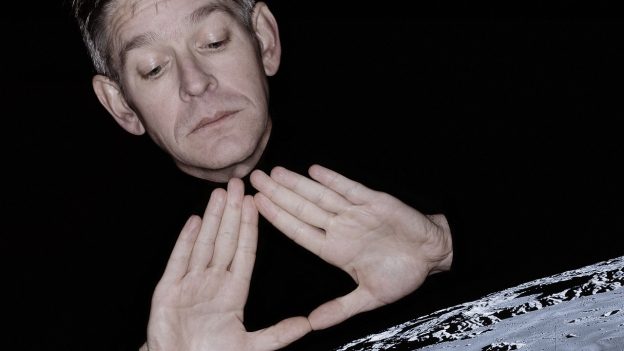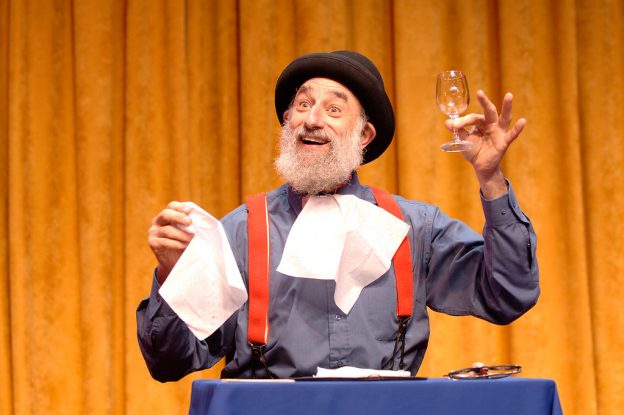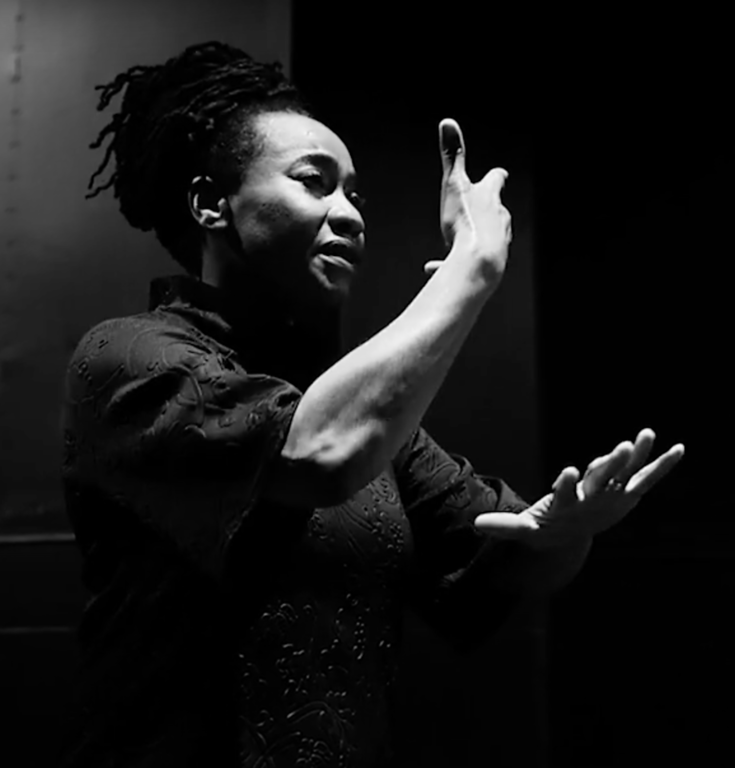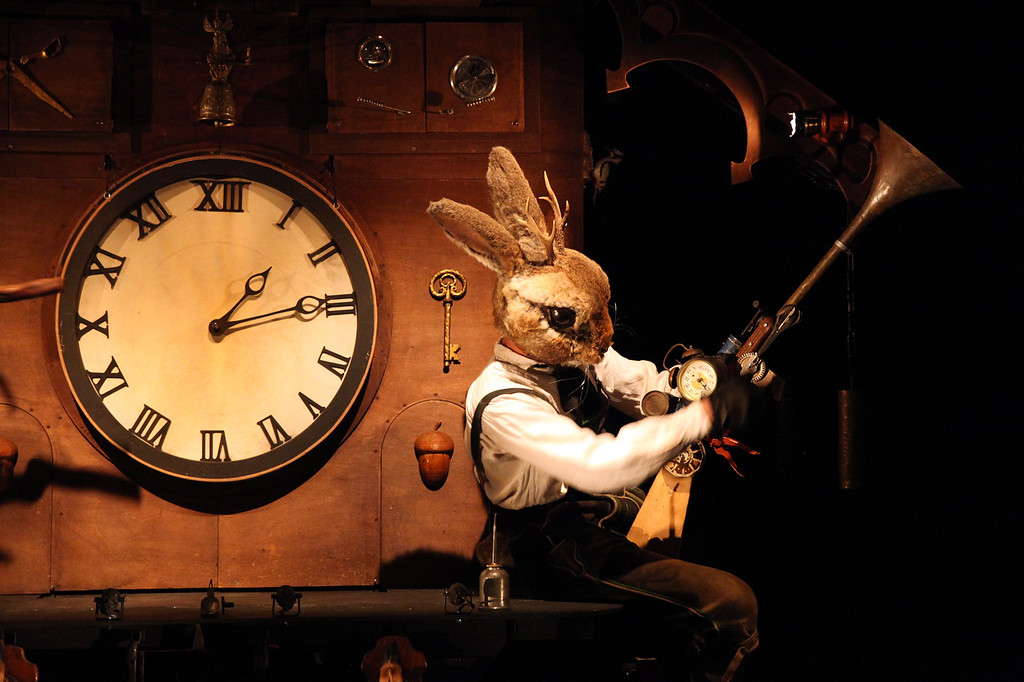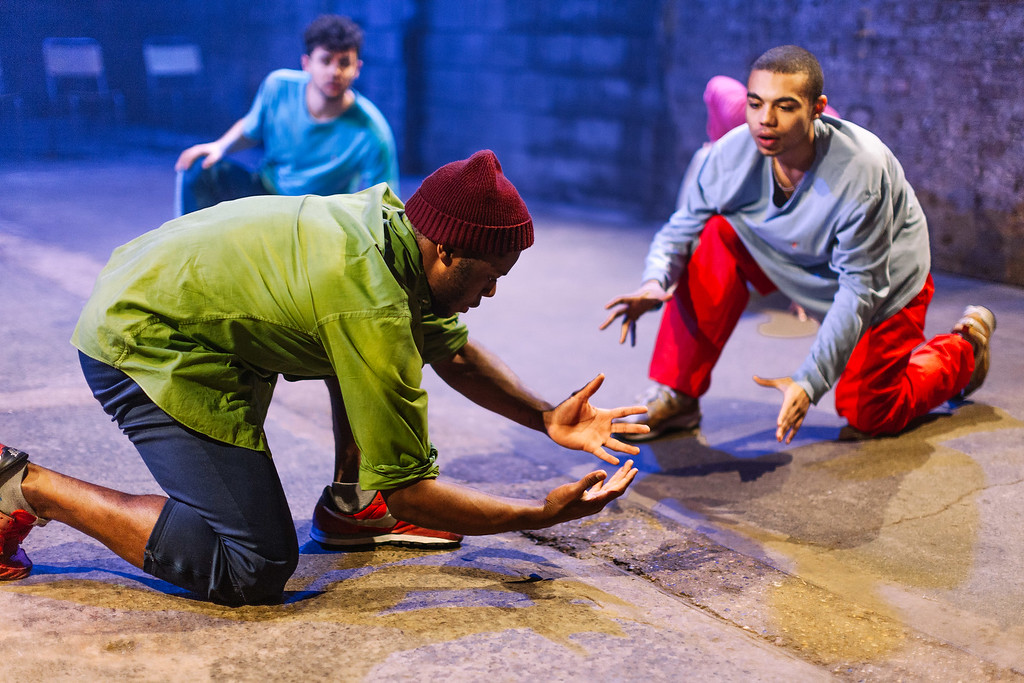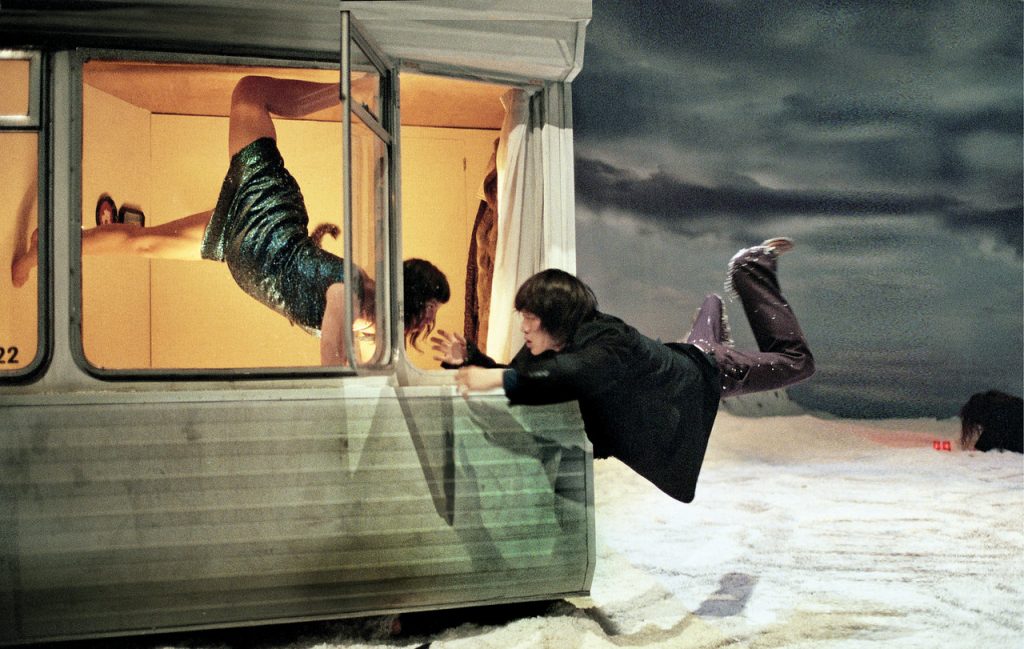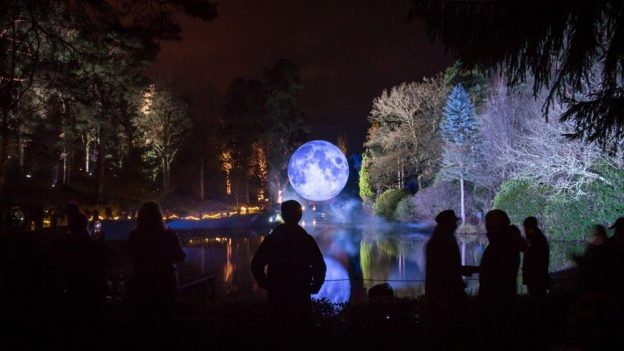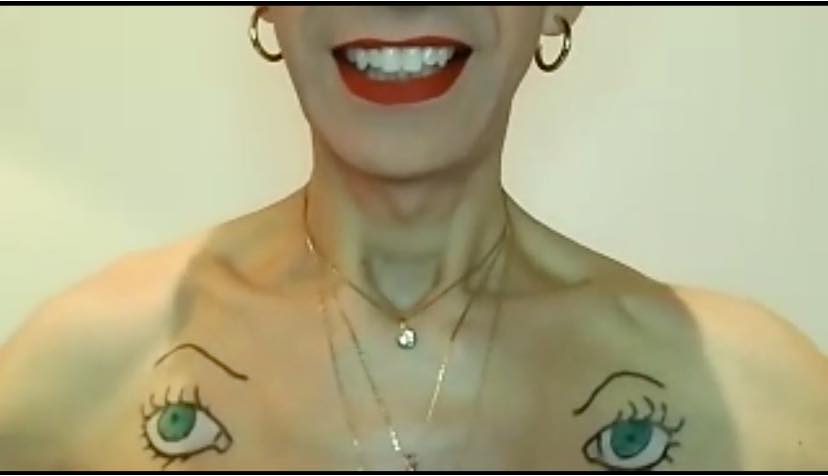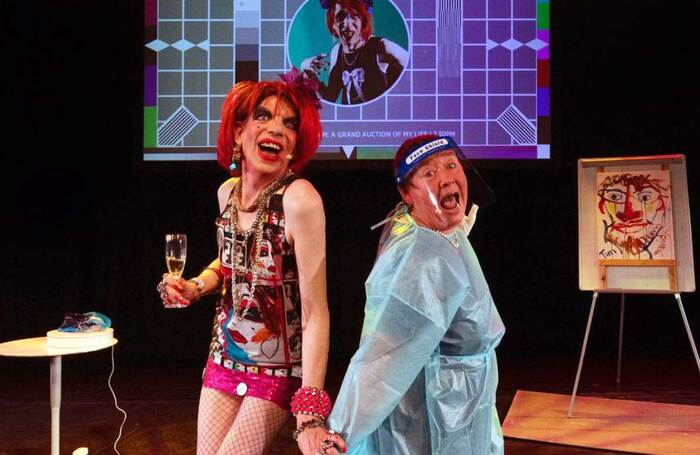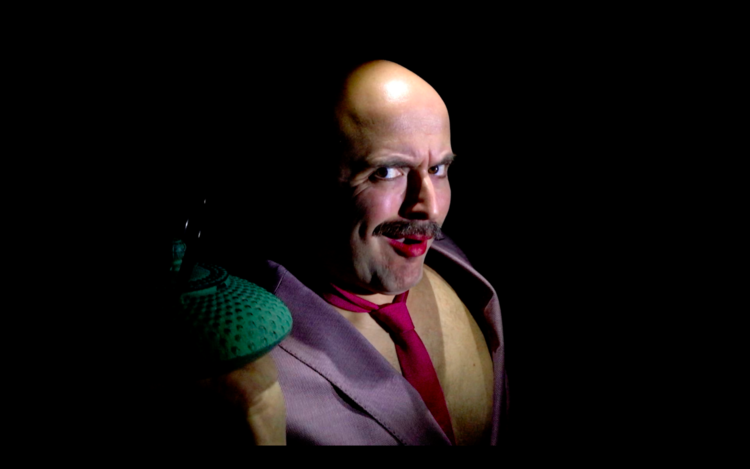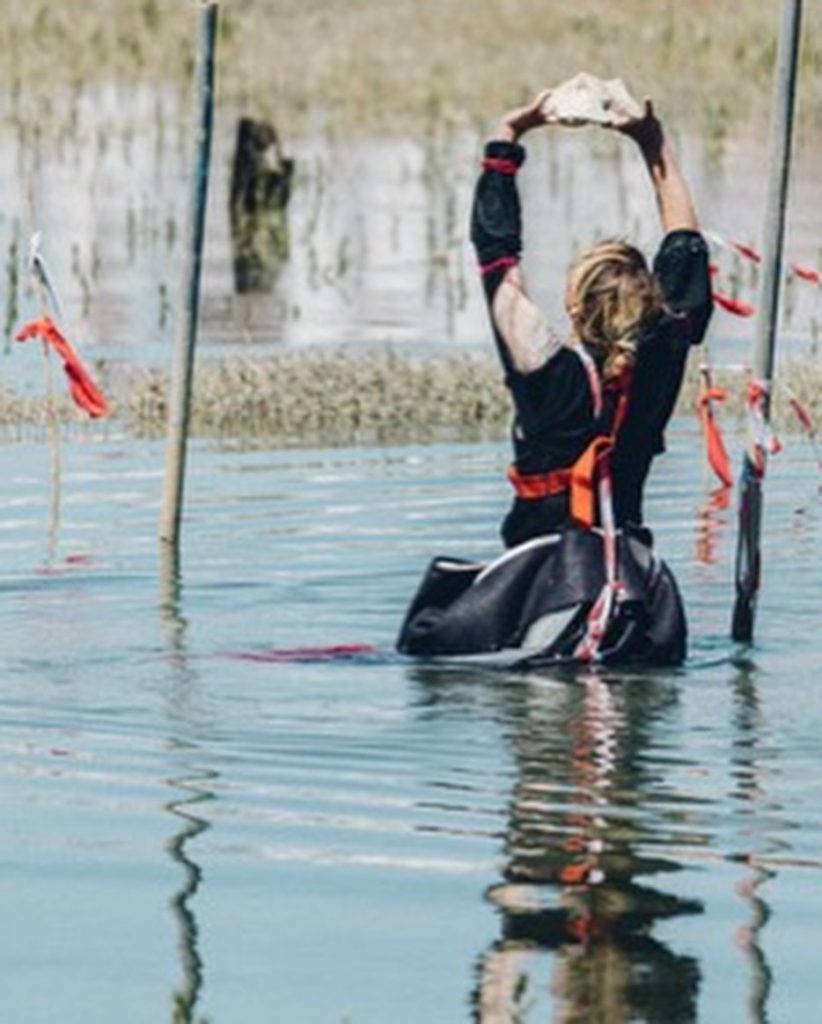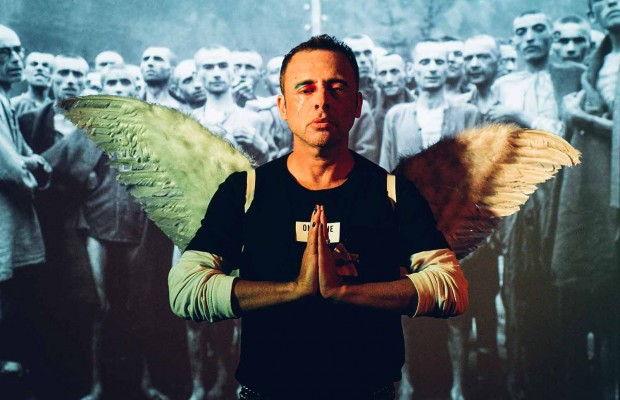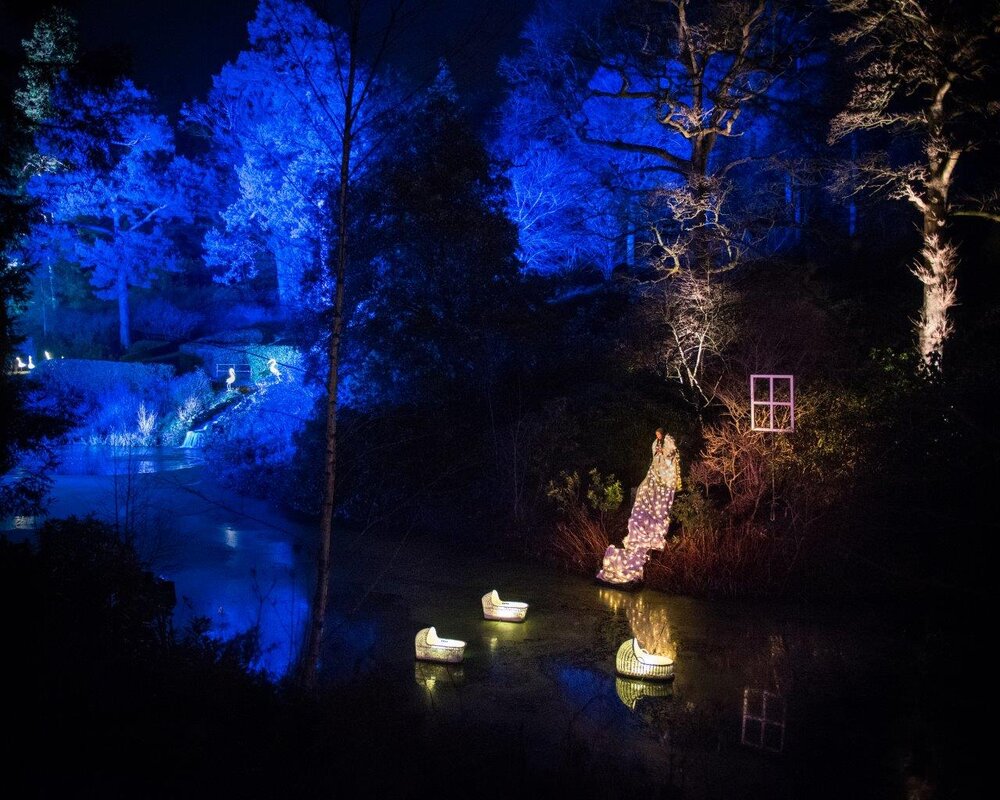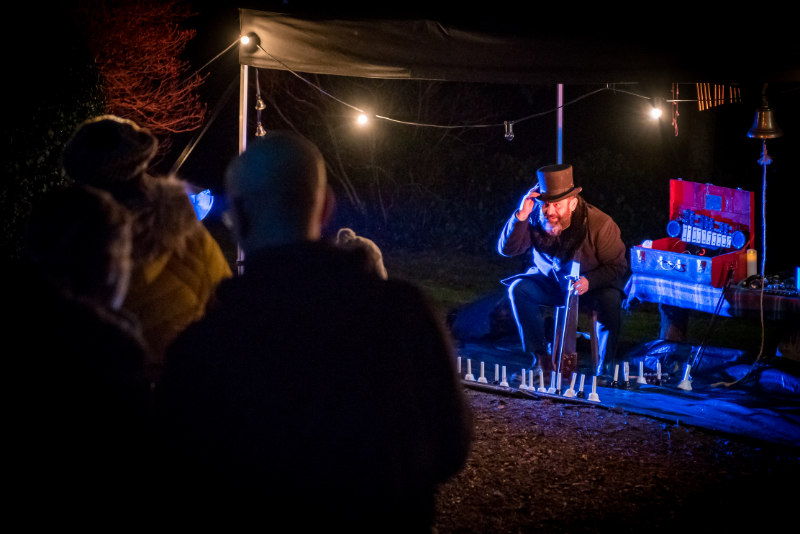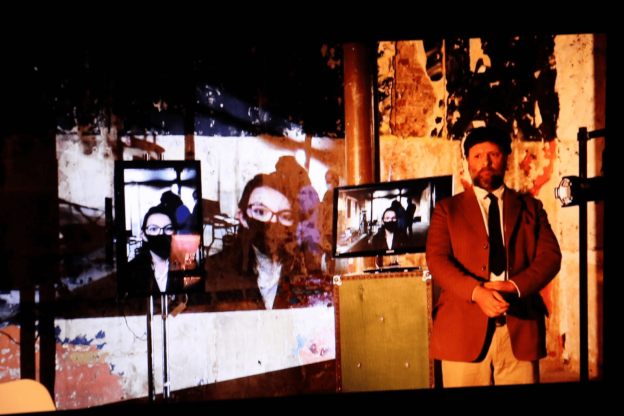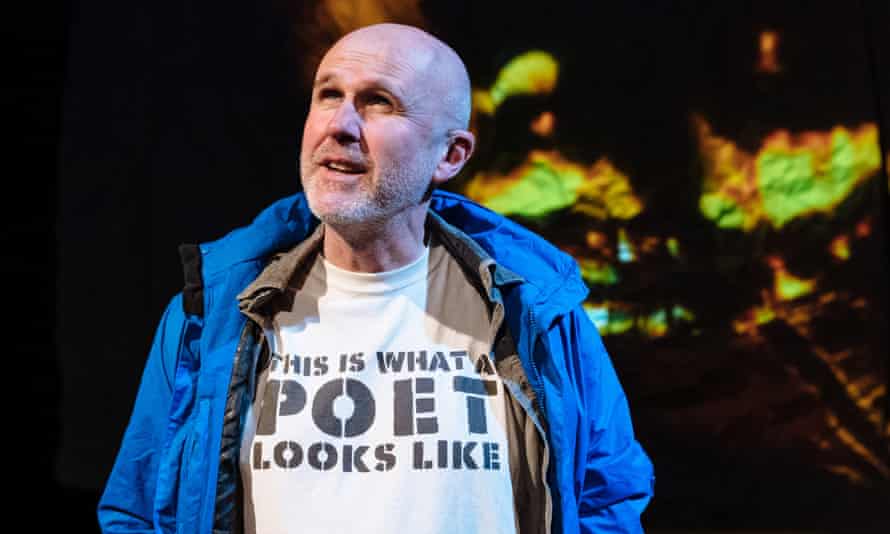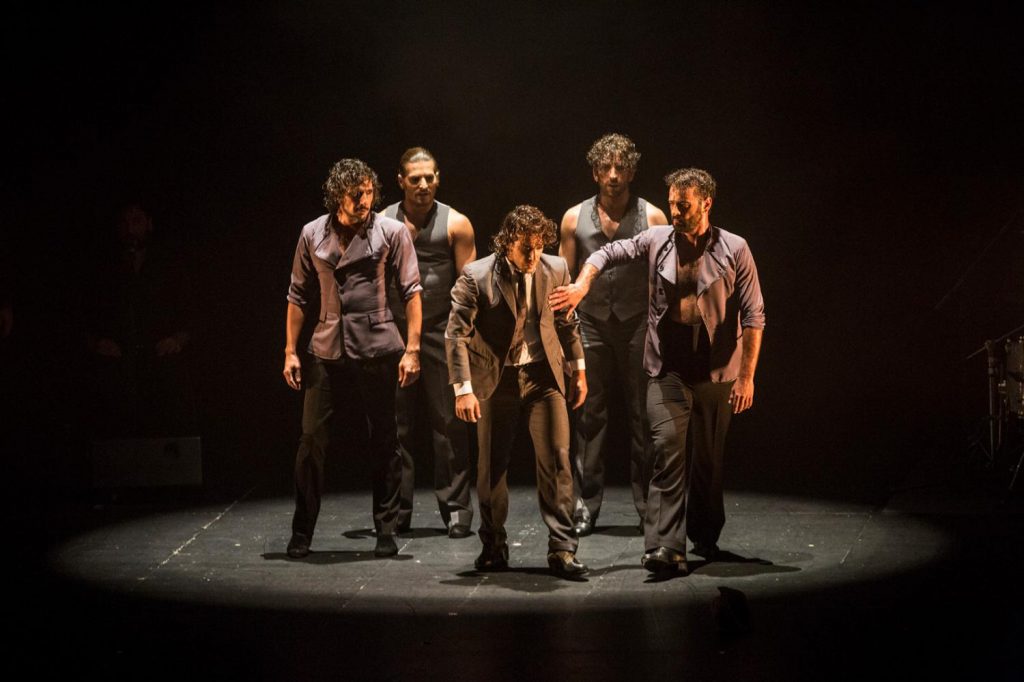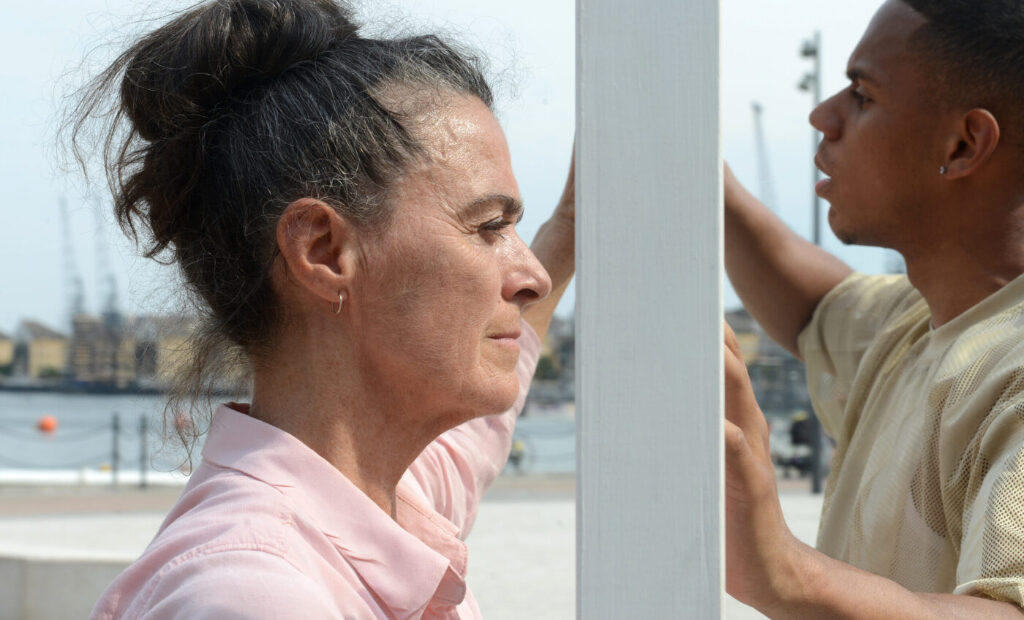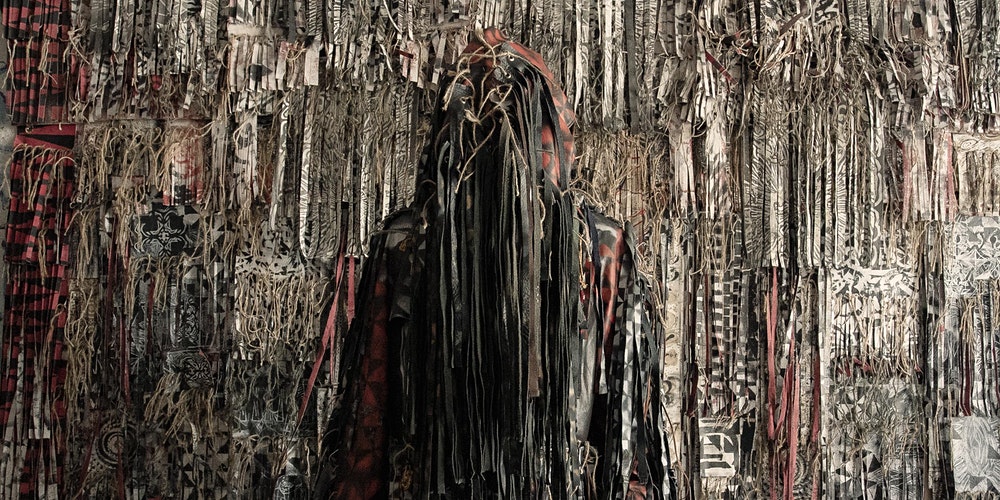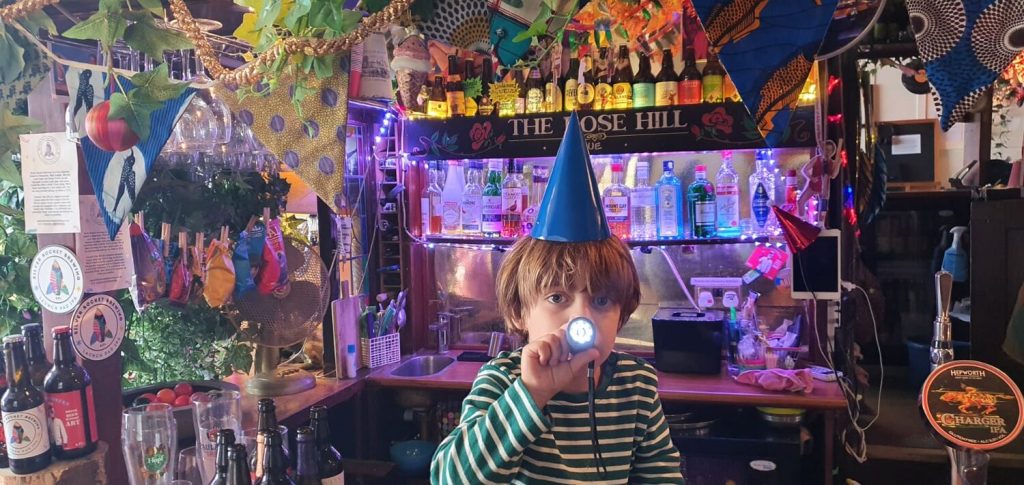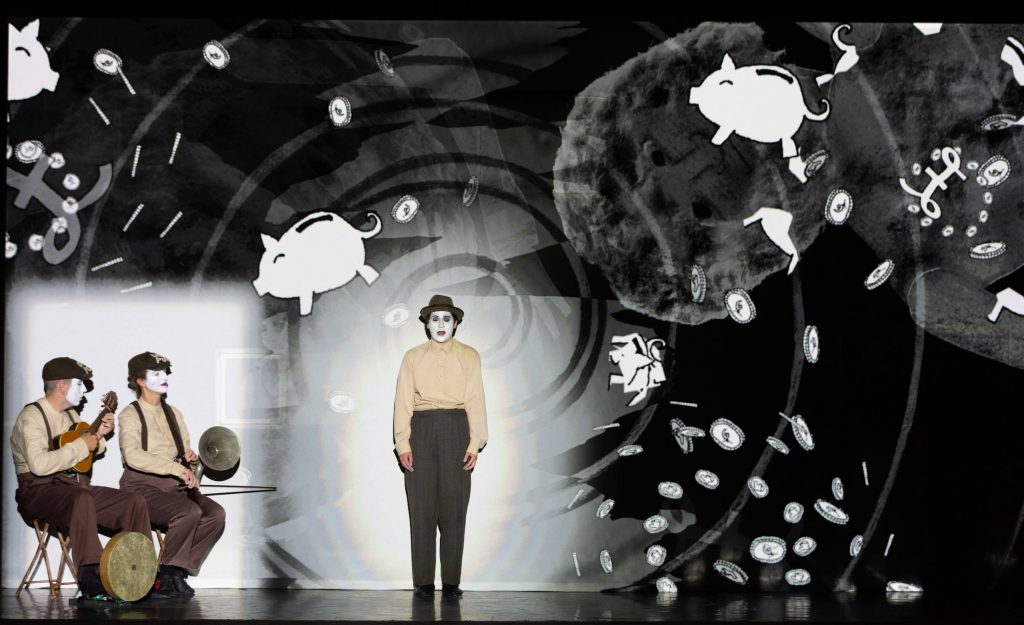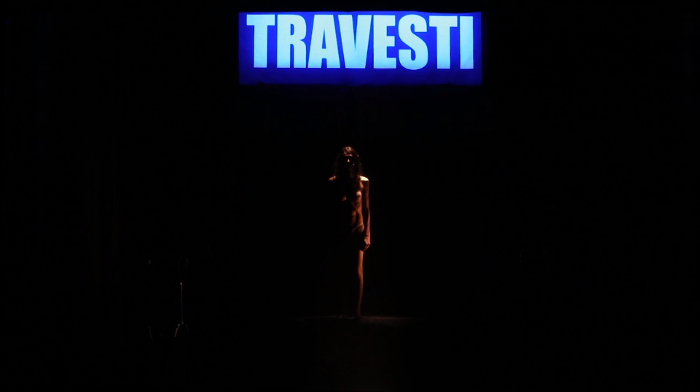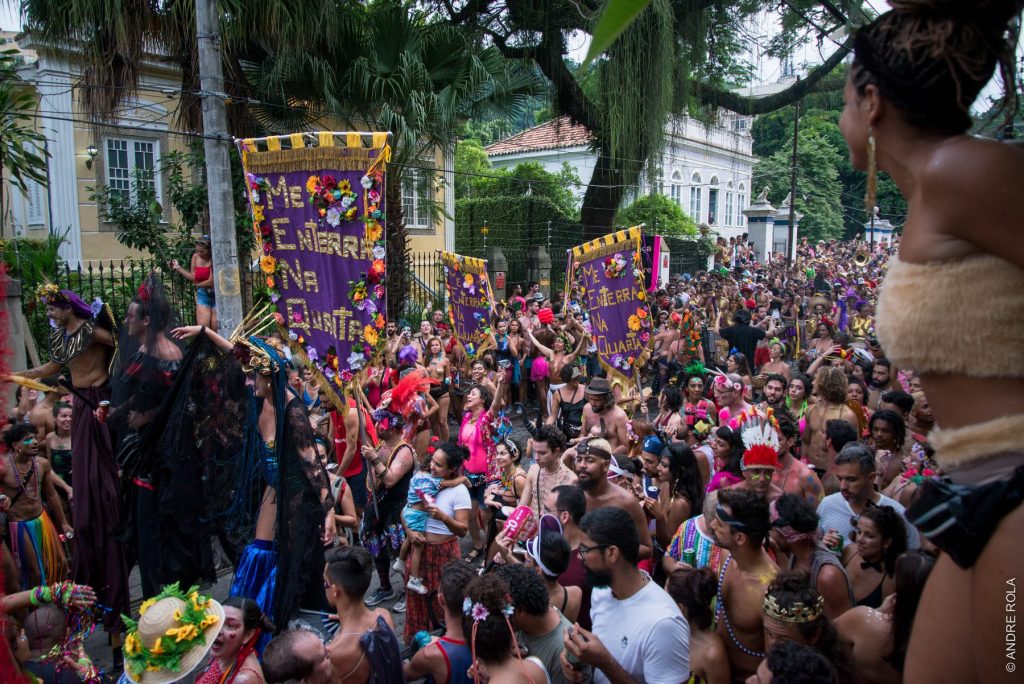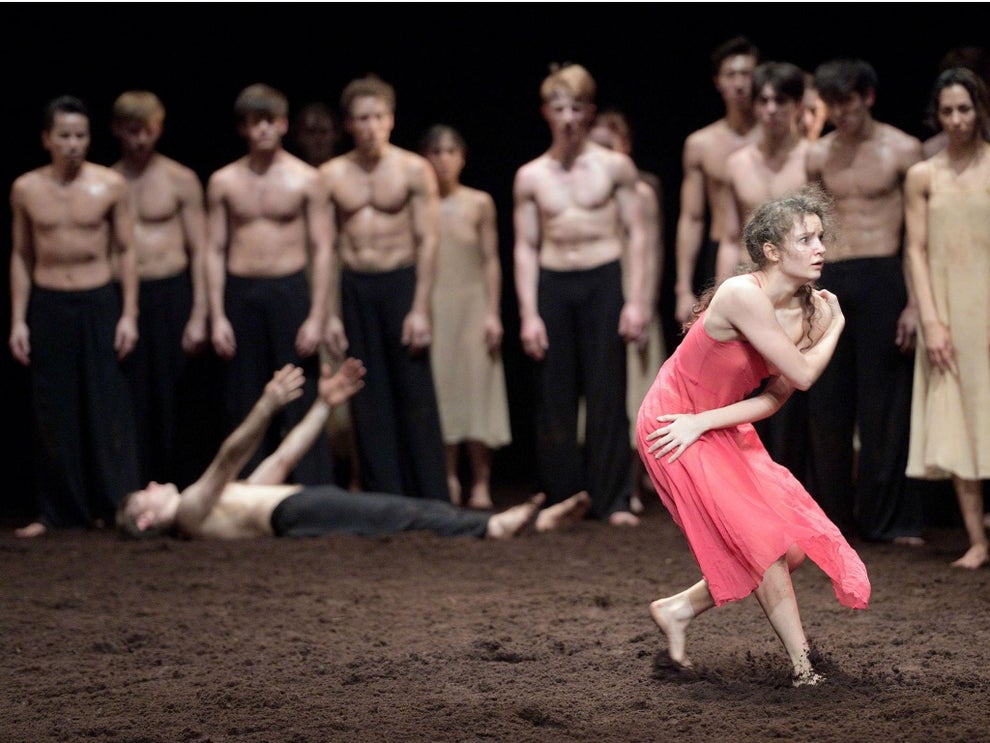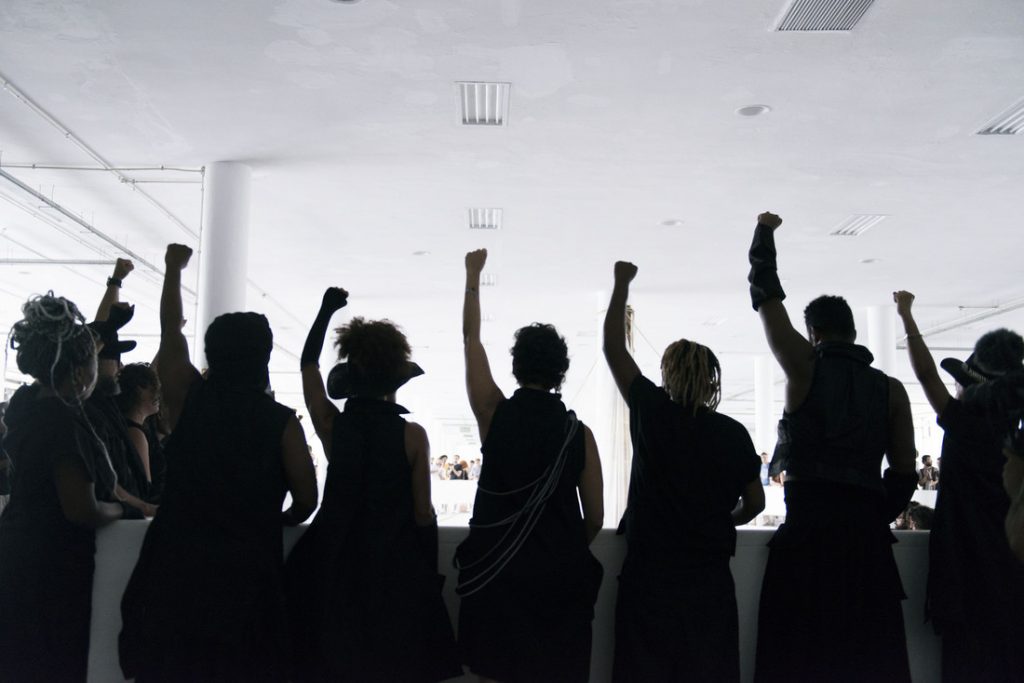Celebrating the launch of his newly commissioned short film for London International Mime Festival 2021, Dorothy Max Prior meets performer, choreographer and theatre director Andrew Dawson, an artist whose eclectic career has taken him across the world – and even to the moon and back
‘Our human essence lies not in arrival but in being almost there, we are creatures who are on the way, our journey a series of impending anticipated arrivals.’ David Whyte, Close
These words from poet David Whyte were the starting point for the latest work by Andrew Dawson – a poignant performance-to-camera piece with a beautiful soundtrack that is one of five specially commissioned short films for London International Mime Festival 2021.
The resulting film – available from 18 January 2021 online and free via the Festival’s website – is called We live by unconsciously measuring the inverse distances of our proximity. Or Proximity for short…
For Andrew Dawson, this is a particularly special project – a film made with his son, Roman Sheppard Dawson – and he muses on the fact that without the pandemic, he may not have made the film. Even terrible events bring blessings. In lockdown with his partner and their two adult children, who returned home for the duration, Andrew found that when he was offered the commission he just happened to have a professional filmmaker resident in the house, making the whole thing far more do-able. Roman is not only a Moving Image graduate from St Martin’s art school, he has also grown up with his father’s work, and has often travelled with him, teching the shows – so they work well together. In many ways, Andrew muses, this new piece is as much his son’s work as his own – a true collaboration, enhanced by the soundtrack by composer Jonny Pilcher, who is another person Dawson has regularly worked with, although in this case the collaboration was online. As for its themes:
‘It is for those who are reaching for something more but can’t quite grasp it. For those on their journey, not yet at their destination,’ he says, ‘We set out to develop a visual poem, as we searched for what is intrinsic in our relationship with others.’

The film was shot locally, in a park near the Dawson residence in London. It’s a movement piece that’s about both the intimacy of touch in nature and the loss of touch between human beings that the current pandemic has precipitated. It is presented as a split-screen work – the two screens not quite touching, emphasising the ‘almost there but not quite’ underlying theme. We see hands gently waving or undulating against the sky, a small plane moving across the screen, tree branches stark and still. As the camera pans out, we realise that Dawson is standing on a chair, swaying gently – secure but alone, in splendid isolation. In some shots, we just see his torso, clad in black, a single hand opening and closing slowly, or a finger slowly tracing down the side of his torso. Sometimes the screens mirror or echo each other. Sometimes they are literally a split screen – a tree spreading across both like an X-ray of lungs. Sometimes one stays blank, or gives us an almost-identical repeat of a shot seen earlier. The camera sometimes pulls right back, leaving the little figure standing on a chair with a backdrop of trees less the focus of attention than one integral part of a whole landscape. A feeling of delicacy and vulnerability pervades every shot, with the washed-out colour grading adding to that feeling. Central to the piece is the constant motion of Andrew’s hands, which are rarely still – circling, flowing, carving shapes in the space.
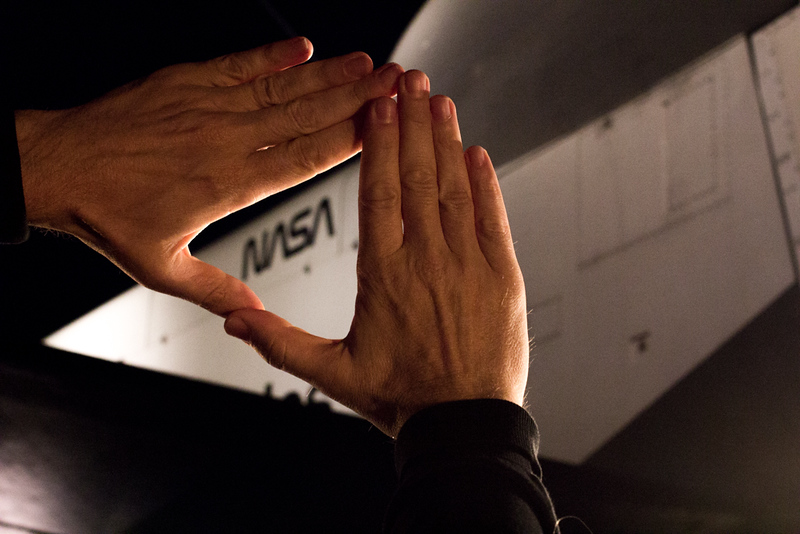
Ah yes – those famous hands! So much of Andrew Dawson’s work is focused on and around them. His first show, Space Panorama, gave us that now famous ‘triangle’ shot which was featured on the cover of a very early edition of Total Theatre Magazine (Autumn 1989), previewing his LIMF appearance the following January. The show has returned to the Festival numerous times since, and can be seen in this year’s videotheque – a programme of filmed shows from previous editions that gives us the chance to catch up on seminal shows we might have missed, or may want to see again. The version we’ll get to see is a 2016 ‘bespoke’ recording: created in Dawson’t own studio, and filmed with a fixed camera and no editing. The piece lends itself very well to the static format. ‘And it’s just 30 minutes long, so a tolerable length,’ says Andrew, with a characteristic gently self-deprecating humour.
Space Panorama is a solo recreation of the Apollo 11 moon landing, using only Dawson’s hands, a re-enactment of the entire mission that is set to sections of Shostakovich’s 10th symphony, with narration by Gavin Robertson. It was only after making it that Dawson noted to himself that he’d chosen a piece of Russian music to accompany the story of an American mission! It’s a piece of music he loves, with ‘an epic quality that carries the story’ but he finds it hard to listen to in any other format than the version used in his show, as ‘it’s all in the wrong order!’ – an allusion to his deconstruction and rearrangement of Shostakovitch’s work when making the piece. Dawson takes us from Houston to the moon and returns us safely to earth, conveying the colossal distances and the risks involved simply through the extraordinarily skilled movement of his hands. Space Panorama has been performed at theatres and festivals throughout the world, including for the marking of the 40th anniversary of the Apollo 11 moon landing at the Kennedy Centre. ‘It was fantastic to perform it there, and to see all three Apollo 11 astronauts at the air and space museum – Neil Armstrong, Buzz Aldrin and Michael Collins brought back together for the occasion,’ he says. the occasion,’ he says.
Looking through Andrew Dawson’s website, I’m interested to discover a piece called Landscapes, created in response to the 1948 John Cage work In A Landscape. This very lovely piece came about when Dawson and Sarah Ainslie, from whom he rented studio space, decided to create an Open Studio event. Sarah, who many know of as Complicité’s photographer, mounted an exhibition of her photo works; whilst Dawson chose to create this new piece inspired by Cage’s gentle piano work – if you didn’t know it was a John Cage composition, you might believe it to be by Erik Satie or Alan Hovhaness. As a former Merce Cunningham student and dancer, Andrew already had an interest in Cage’s work, and when played this piece by a friend, found it to be the perfect inspiration for a performance-to-camera work that was improvised rather than meticulously choreographed, performed in one take. ‘The only time I performed it was for the making of the film – and I decided never to do it again,’ he says. There’s something so beautifully Cage-like about all this! The John Cage Trust saw the film and loved it, and added their blessing. Landscapes is available on www.andrewdawson.info and although very different, is a beautiful companion piece to Proximity, the new film commission.
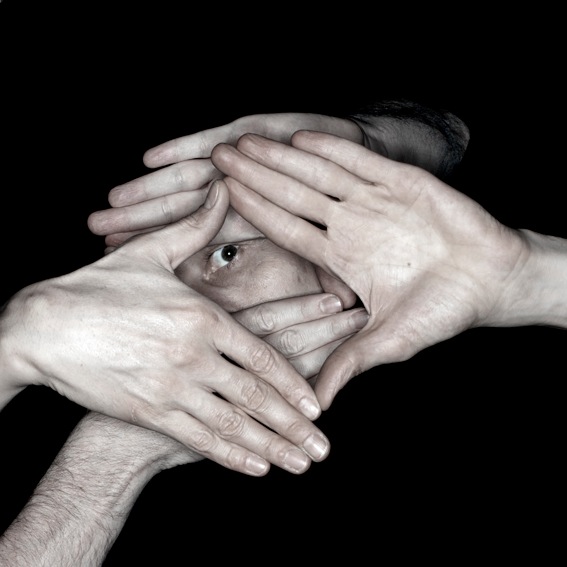
Another of Andrew Dawson’t legendary ‘hands’ pieces is Quatre Mains, a collaboration with Jos Houben, who provides the other pair of hands. This one, like Space Panorama, will be shown in the LIMF 2021 videotheque 1, 1990-1999. Quatre Mains is described on Dawson’s website as ‘an intimate dance for four hands… an evocative visual poem of finely tuned movement and gesture.’ Much later, the piece was recreated with Sven Till, and this, as Andrew remarks, ‘allowed Jos Houben to see it from the outside for the first time!’ Again, as a piece that takes place on a table, it transfers very well to film. We’ll get the 1998 version at LIMF 2021 – and like all of the rest of the videotheque programme, it will be available free to view online from 18 January at www.mimelondon.com
Talking of Sven Till takes us neatly to Andrew’s other main strand of work, as a choreographer and director. In recent years, he has worked as movement director on a number of plays and operas, including MET/ENO productions Doctor Atomic and The Pearl Fishers, which were both directed by filmmaker Penny Woolcock, the working relationship between Penny and Andrew brokered by designer Julian Crouch. But long before these big-cast large-stage successes came the far more compact and contained Pandora 88, a multi-award winning piece co-created by performers Wolfgang Hoffmann and Sven Till with Andrew Dawson in the director’s seat. It sits somewhere between dance and theatre, and is set inside a bespoke ‘box’ that is just 1.5 sq metres. This box is ‘their playground, home, prison, and their sanctuary, source of light, sound and memories. A place where their lives start and finish, to which they’re bound for better or worse’. The piece was inspired both by Brian Keenan’s An Evil Cradling (about his experience as an imprisoned hostage) and Stanley Kubrick’s 2001 – A Space Odyssey. ‘It is about restraints and confinement,’ says Andrew, noting that in its investigation of confinement, it it suddenly seems prescient, foreshadowing our lockdown days. Pandora 88 was presented at the 2003 Edinburgh Fringe as part of the Aurora Nova festival-within-the-festival produced by Wolfgang Hoffman. It was created at Fabrik, Potsdam – a venue and creation centre run by Wolfgang (he’s an enterprising person who wears many different hats!).
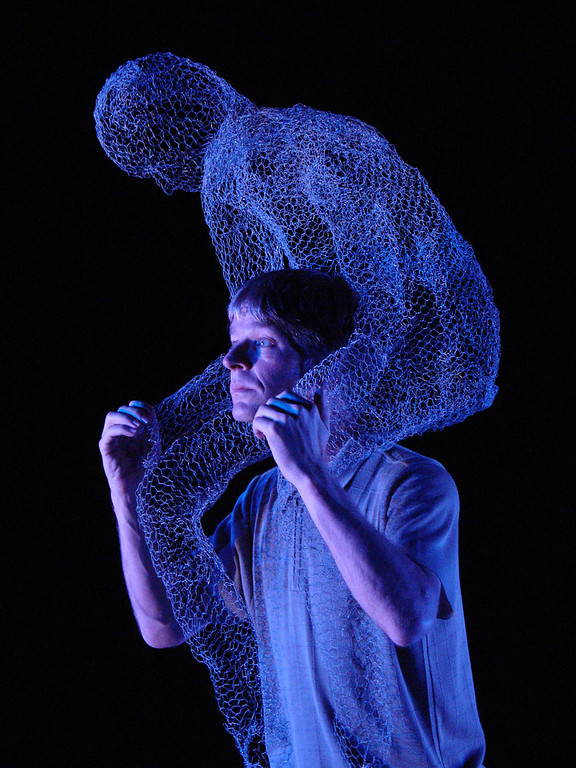
A year or two later, Andrew returned to Potsdam to create Absence and Presence – which like Pandora 88 won a Total Theatre Award, amongst many other accolades, at the Edinburgh Fringe. This highly personal piece is very different to most of Dawson’s work, an homage to, and dialogue with, his dead father. It’s a wonderful bringing together of movement theatre, object animation, video, and spoken text, enhanced by a lovely score by Joby Talbot – and it was a long time in the making. Dawson senior died in 1985, when Andrew was in his mid-twenties, but the piece only saw the light of day two decades later, in 2005. For a long time, it was a gestating idea at the back of his head, or explored in brief notes. Eventually, the time was right – a grant from Arts Council England, plus the offer of creation space at Potsdam, meant that the project could be given the time and attention it needed. When Dawson senior died, his body lay undiscovered for ten days – a fact that Andrew mused on constantly over the years: ‘The idea that he lay dead, but life went on all around him – next door, outside his window, even the food in his fridge going mouldy. Nothing stops, but there is an absence, a silence…’ This constantly replaying thought became the catalyst for the making of the show.
He spent a year working on it, ‘drilling into that time…quietly pottering’ reading and re-reading his father’s letters, recording them for inclusion; creating short video pieces to be played on an old TV monitor; making a ‘chicken-wire-man’ sculpture of his father that is gently danced with onstage. He worked alone a lot of the time, but had collaborators in Graham Johnson and Jos Houben. He talks of Jos’s role being to come in and ‘rupture’ the procedure, saying: ‘Ah yes, you’ve tried this, but have you thought of that?’
When finally it was made, he realised that it was a piece about ‘a missed relationship with my father,’ going on to say that ‘you never quite know what you’re making until it’s done.’ He very much valued the special time and space that Fabrik, Potsdam provided in the early stages of the process: ‘I stayed in a little room at the back of the studio – I could go in and work on the piece at 2am if I wanted to.’ Sometimes the intensity of it all got too much and he would leave the studio for a couple of weeks, only to come back to find something – a half-made sculpture, or one of the key objects ‘his glasses, his pipe, the letters’ – would ‘talk’ to him in a different way to before, and provoke the next stage of the work. ‘I don’t see at as a solo piece – I feel I made it with my father’ he says.
Which leads him to muse on the fact that here he is now, another two decades on, creating a piece of work that could be seen as his own son’s dialogue with his father. ‘It was just him and me – and it’s almost more him than me…’
Poet David Whyte’s line We live by unconsciously measuring the inverse distances of our proximity is the starting point and title of this new film. But it also serves as a comment on that earlier work, Absence and Presence, and on the relationship between Andrew Dawson and his now long deceased father.
Seeing both pieces of work together, we can readily grasp the connections and continuity. Life goes on, quietly. There is absence, there is presence – and there is the space in between.
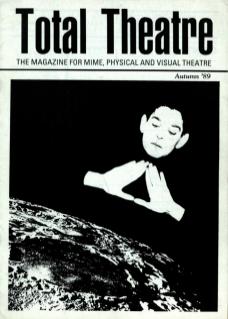
Featured image (top): Andrew Dawson: Space Panorama. Photo Nidin Vadukul
For more about Andrew Dawson and his work, see www.andrewdawson.info
See https://mimelondon.com/ for full details of the London International Mime Festival 2021, including the new film commissions by Andrew Dawson and others; and the full three-part videotheque programme which includes Space Panorama, Quatre Mains, Pandora 88, and Absence and Presence.

